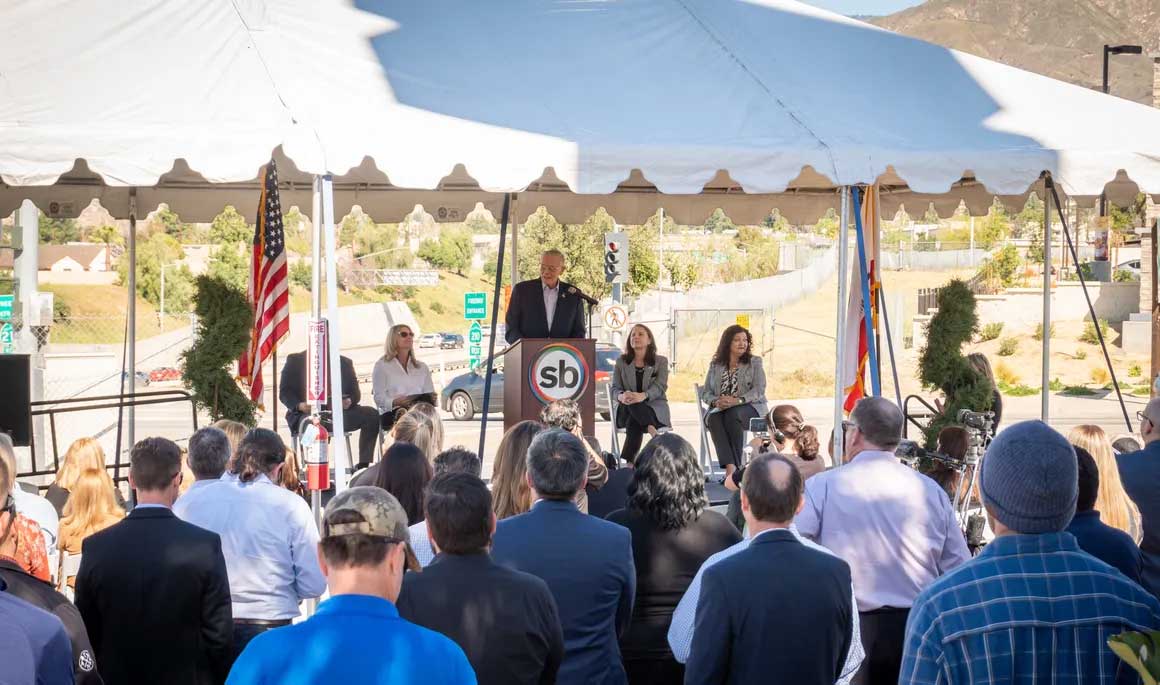 This project is significant for the local communities of Highland, San Bernardino and Redlands as the improvements to the SR 210 corridor have been long awaited. Initially, there were three different projects (lane addition to alleviate a bottleneck along SR 210, improvements to the Base Line Interchange and a pavement rehab project). However, Caltrans and SBCTA combined the projects, resulting in schedule efficiencies, reduced impacts to the surrounding communities and significant cost savings.
This project is significant for the local communities of Highland, San Bernardino and Redlands as the improvements to the SR 210 corridor have been long awaited. Initially, there were three different projects (lane addition to alleviate a bottleneck along SR 210, improvements to the Base Line Interchange and a pavement rehab project). However, Caltrans and SBCTA combined the projects, resulting in schedule efficiencies, reduced impacts to the surrounding communities and significant cost savings.
Although local stakeholders welcome these improvements, there are numerous challenges that come with delivering three projects as one. In addition to typical construction challenges, including mainline lane and full freeway closures, ramp and local street closures, many residents live near the corridor, which calls for added sensitivity when planning certain construction activities.
From the outset, the CPOG team has developed a close working relationship with the project team members and Caltrans staff and meets regularly with partners in the corridor cities to ensure local residents are notified in advance of particularly disruptive activities. These relationships allow us to capitalize on existing communication channels currently in use by our partners (e.g., city social media channels and websites) to extend the reach of our weekly construction notices and other communications tools, such as door-to-door canvassing and outreach to local businesses. Maximizing the relationships with local partners has also allowed the team to anticipate concerns by a major project stakeholder — Yaamava’ Resort & Casino. The casino is near the project area and draws significant traffic and congestion to the area, posing frustration for locals and visitors alike. Recognizing the casino’s concerns early on, the CPOG team met with the casino and is working closelywith their communications team to ensure construction activities are well coordinated and communication with this important partner is transparent, avoiding potential conflicts.
At project initiation, CPOG hosted an all-team meeting to identify the outreach timeline and key project milestones, review the public outreach plan, determine key stakeholders, and identify key issues within the project delivery. Collateral materials created included a project fact sheet in English and Spanish, FAQs, PowerPoint presentation, and newsletter template to communicate project details and benefits, as well as construction milestones highlighting key ramp closures and detours. A 24/7 dual language hotline was created in addition to an agency-branded email so that stakeholder inquiries can be fielded in real time.
CPOG organized a groundbreaking event to feature elected officials from each of the three cities, as well as Caltrans and a member of the San Bernardino County Board of Supervisors. Leading up to construction, CPOG worked closely with the contractor and the cities to educate and engage first responders, residents, local businesses, and schools to identify a coordinated approach to closures and detours. CPOG planned for a first responder briefing to include the cities, county, local law enforcement, fire agencies and local hospitals and ambulances. The meeting included a presentation from the resident engineer and SBCTA staff to review the project and the 25 ramp closures. At registration, CPOG provided a check-in sheet and listed all invited first responders with collected contact information. The sheet also included a column for attendees to check whether they were the first, second, or third line of contact in each of their organizations. The sheet is now used by
all, including city staff, to ensure closure and detour information is shared that may impact response time.
With construction almost 90% complete, multiple freeway closures and 55-hour closures, CPOG has engaged more than 20,000 stakeholders through several outreach platforms including weekly construction alerts with a live Google Map to showcase construction closures and detours in real time, neighborhood meet ups, canvassing, business walks, school outreach, and social media outreach including geofencing ads and videos.